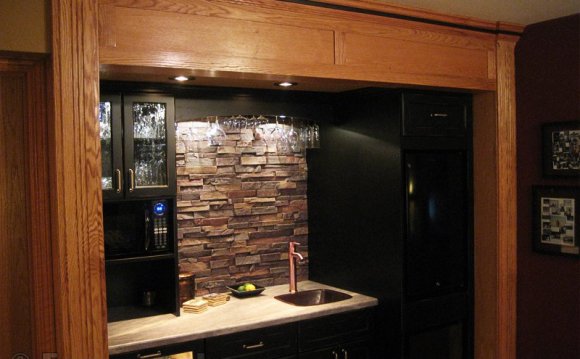
 You can make a stunning kitchen area or bathroom backsplash with faux panels – but how can you have them clean?
You can make a stunning kitchen area or bathroom backsplash with faux panels – but how can you have them clean?
Many people are pretty pedestrian with regards ot kitchens and bathrooms. They typically finish all of them in tile, which seems good enough and it is simple enough to help keep clean. But the end result will look pretty boring.
For this reason most manufacturers look to our selection of stone, and brick veneer panels. Affordable and simple to set up, they may be able offer not only the appearance, but texture of real stone or stone – and that adds a thrilling high-end finish to kitchen areas and restrooms such as the kind you’d normally just see in an expensive deluxe resort or show home.
But those vivid and practical textures do complicate things somewhat. One concern we usually get asked is: how can you keep those richly step-by-step panels clean?
Splash Damage
The bonus conventional tile has usually it is fairly flat. Glazed tiles, particularly, can ordinarily be cleaned clean with a wet rag and a spritz of bathroom solution. Also then, it is common to see tarnished grout in tiles being also just a few years of age.
But with the panels’ realistic textures of rock and stone, it is less very easy to swipe and wipe with a container of Mr. Clean and phone the job done. Grease, dirt and spills could possibly get into the nooks and crannies for the panels and become more involved getting clean.
Grease, dirt and spills could possibly get into the nooks and crannies for the panels and become more involved getting clean.
Well, here’s what's promising: The panels tend to be molded from high-density polyurethane that will be exceptionally resistant to dampness, staining and stain. Polyurethane is a closed-cell type of plastic; which means that it is not dissolvable to shape or color, and can therefore only seldom get stained by something splattered onto it.
This is actually a lot better than even tile grout, which easily gets stained and discolored.
To clean all of them effectively, we recommend the annotated following:
- Carefully wipe the panel with water and soap or a mild detergent (do not use substance cleansers like all-purpose aerosols). This will breakdown grease as well as other materials (like toothpaste, in the restroom).
- Scrub with a soft-bristled brush. You can use a standard washing-up brush through the grocery store. These are tough adequate to enter into every nook and cranny of a panels, without getting abrasive enough to really harm all of them.
- When scrubbed, rinse off with hot, clean water. For those who have a spray accessory or showerhead, this is basically the perfect thing for cleaning the residue.
- Dry with a soft bath towel. This task isn’t obligatory, but drying with a moist bath towel does avoid watermarks.












